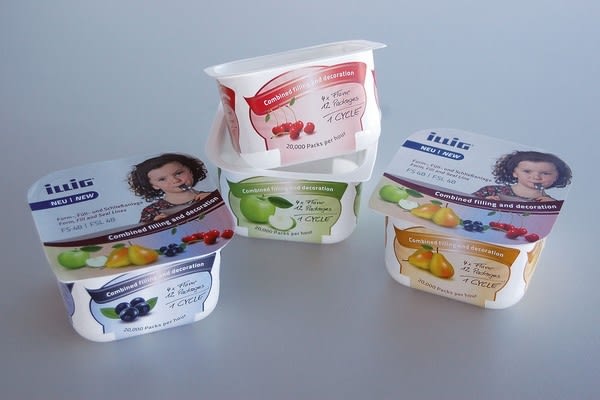Another trend in the beverages sector is towards healthy drinks containing chunks, e.g. water with chunks of Aloe vera and milk and yoghurt drinks with fruit chunks. This calls not only for the matching bottle geometries, but also for bottling technologies capable of cleanly and precisely metering solid particles. As one of several specialist machine manufacturers in this area, Krones AG in Neutraubling is offering under its Dosaflex label special metering systems for lumpy products up to a size of 3x3x3 mm with a metering accuracy of ±0.3%. And on the subject of milk and yoghurt drinks, there is a distinct trend here to an expanding product spectrum. However, since dairy-based drinks have an only limited shelf life, Holland Colors NV in Apeldoorn, Netherlands, is presenting at K 2016 its new Holcomer III solid additive that permits the production of PET monoloyer packaging solutions for UHT milk as it yields 100% protection from UV radiation and up to 99% protection from visible light. The obvious advantage of this solution is its monolayer structure which lends itself better to recycling than the multi-layer equivalent.
Light weight as a perennial theme
The weight of each package solution continues to be important. A great deal has happened in this area in the last few years. The ideas and savings potentials are many and varied: the omission of package outers, flexible rather than rigid or semi-rigid packages, new designs and the reduction in wall thicknesses. From 1991 to 2013, packages thus became 25% lighter overall. In 2013 alone, 1 million tonnes of plastics was saved worldwide as a result of weight reduction, despite the growing expectations on functionality. And, taking PET again as an example, not only have the wall thicknesses been reduced, but the base design has also been optimised. The new thread design alone saves 2 g of plastic per bottle. To optimise the bottle base, Creative Packaging Solutions Ltd. in Balcova-Izmir, Turkey, has developed its Mint-Tec process in which, after creation of the preform, a ram extends into the latter - without touching the neck - and gives the base its desired shape.



